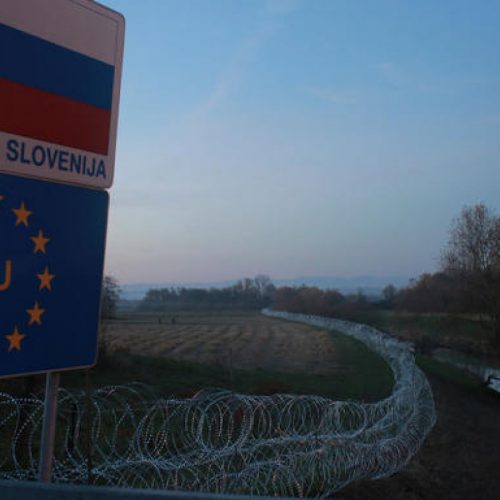News
Barbed wire fences between European countries endangers wildlife:
Statement by IUCN and WCPA Transboundary Conservation Specialist Group
In the last few months, more than 500,000 refugees and migrants from Syria and other Middle Eastern countries passed through Croatia in search of security and a better life in Germany and other European countries. In an attempt to control the further influx of migrants, Hungary started erecting a barbed wire fence along its boundary with Croatia in October 2015. This was followed by Slovenia which erected a fence along an 140 km portion of its boundary with Croatia.
However, the fences do not only stop people from crossing the borders, they also create problems with free transboundary movement of wild animals and disabling the ecological connectivity. Ecological connectivity is highly important for species that migrate on a daily or seasonal basis in search of food, shelter or potential mates. Also within the future Transboundary Biosphere Reserve "Mura-Drava-Danube" (TBR MDD), also called the "Amazon of Europe" (AoE), such fences can cause problems with transboundary conservation goals.
Historically, the boundary of Croatia and Slovenia, which is about 500 km long, had no physical barriers that would disable the movement of species or local people. Moreover, portions of areas adjacent to the political boundary are part of the EU Natura 2000 ecological network where connectivity, essential for transboundary movement of species, has so far been assured. The situation has changed ‘overnight’, creating doubts about the future of wildlife, some of which is already on the brink of extinction. For years, Croatian and Slovenian scientists have cooperated on various projects and action plans to protect and sustain certain species. With the new fence in place and further plans by Slovenia to erect still more along the border, transboundary conservation of these species is at risk, as wildlife and nature know no political boundaries.
Transboundary Conservation Specialist Group of the International Union for the Conservation of Nature’s (IUCN) World Commission on Protected Areas (WCPA) raises serious concern about erection of the barbed wire fence which has already proven to harm wildlife by exposing it to suffering, and believes that such a fence creates unfavourable conditions for ecological connectivity and the migration of wildlife, including threatened species. This article from October highlights these problems - (please be advised that the article contains graphic images which some people might find upsetting!)
The current situation with physical obstacles to free movement of wildlife at the boundaries of Croatia with its adjacent EU countries is not an isolated case in Europe and in the world. Some other examples include the extension of the fence between Greece and the Former Yugoslav Republic of Macedonia, Bulgaria and Turkey, and Greece and Turkey. Such physical barriers will generate sustained direct and indirect impacts to ecosystems and migration corridors, often of ecological importance at the European scale.
If you are interested in finding out more about the issue please click here.

